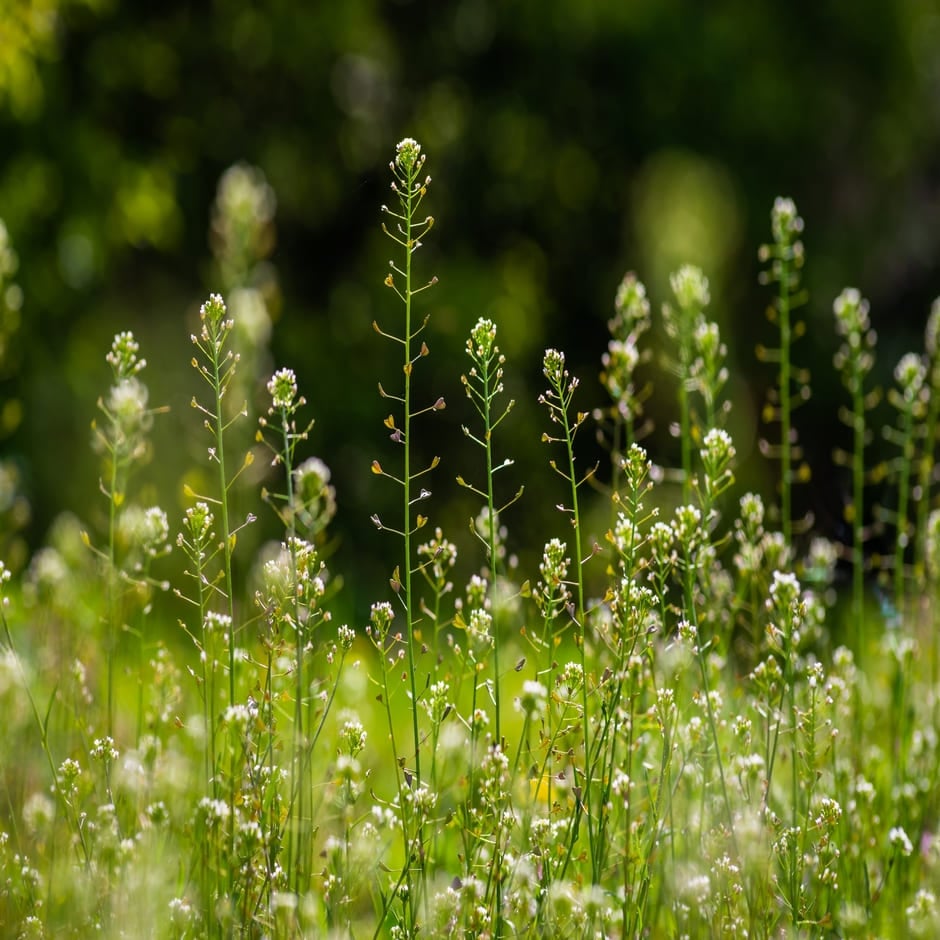Shepherd's purse
Small, low-growing rosettes of shepherd’s purse can easily be overlooked. The plant becomes more distinctive when heart-shaped seed pods form – these contain large quantities of seed, so you may want to remove them from areas of your garden.

Quick facts
- The botanical name for shepherd’s purse is Capsella bursa-pastoris
- Chaffinches and other small birds eat the seeds of shepherd’s purse
- Shepherd’s purse is fully-hardy throughout the UK and can even flower during mild spells in winter
- If you need to control shepherd’s purse, non-chemical methods are easy and effective
Jump to
What does shepherd’s purse look like?
Shepherd’s purse can be at any stage of growth year-round, but you are most likely to see just the leaves in winter, with flowers in spring, summer and autumn.
Is shepherd’s purse a weed?
Frequently asked questions about controlling shepherd’s purse
How invasive is shepherd’s purse?
Shepherd’s purse spreads by producing lots of seeds, multiple times a year. It is not fussy about where it grows, so seeds have a good chance of germinating if they land on bare soil. However, plants are short-lived and have one main taproot, making them easy to hoe off or pull out. By doing this before plants set seed, you can easily clear an area of shepherd’s purse.
Do I need to get rid of shepherd’s purse?
No – you don’t need to eradicate shepherd’s purse from your garden. Among large, established plants, it won’t cause any harm, so you can leave shepherd’s purse to grow in a designated wildflower patch or in unused, rarely visited parts of your garden. In a veg patch or an area where you wish to grow small plants, shepherd’s purse could be problematic and you might choose to remove it.
What is the easiest way to kill shepherd’s purse?
If you have shepherd’s purse growing where it is not wanted, there are a few easy ways to remove it: - Hoe off plants – slide the blade of a hoe just under the rosette of basal leaves to sever the taproot and kill the whole plant. Do this on a warm, dry or windy day, so exposed roots dry out quickly. Hoeing removes weeds with minimal soil disturbance.
- Pull or fork out plants – this may be a good option if shepherd’s purse is growing among other small plants and hoeing isn’t a feasible option. Hand pulling is usually easy, but on compacted soil you may need to use a hand fork.
- Smother plants – prevent seeds from germinating by covering the soil with a mulch of organic matter about 8cm (3in) deep, or a mat of ground cover plants.
Should I use a weedkiller?
As shepherd’s purse is easy to control by hoeing and pulling out, there’s no need to use a weedkiller.For more information, see our page on Weeds: non-chemical controls.
Get involved
The Royal Horticultural Society is the UK’s leading gardening charity. We aim to enrich everyone’s life through plants, and make the UK a greener and more beautiful place.